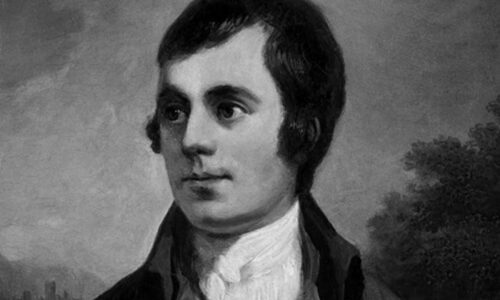Have you ever wondered how tall William Wallace, the famous Scottish hero, was? Wallace has become a legendary figure known for his bravery and leadership during the Wars of Scottish Independence. But beyond his heroic deeds, his height has been a topic of curiosity and debate. Was he truly a giant, towering over his enemies? Or was his stature more average?
In this post, we will explore historical records and legends to uncover the truth about how tall William Wallace was. Get ready to step back in time and discover the real story behind this fascinating figure.
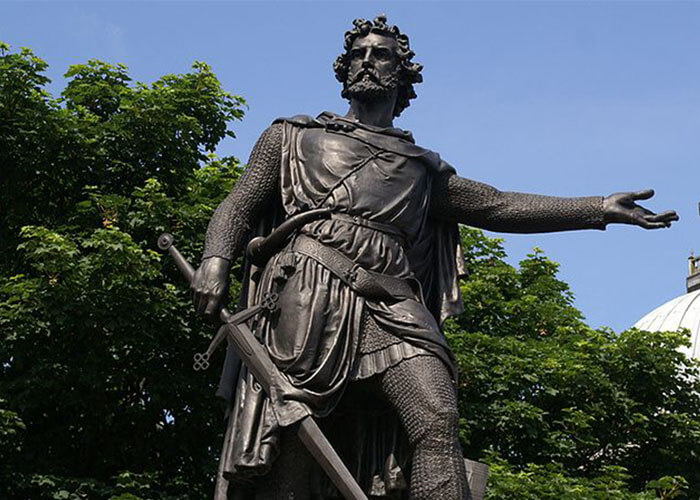
How tall was William Wallace? Discover the Truth
A brief introduction to William Wallace
William Wallace, born around 1270, was a Scottish knight who became one of the main leaders during the Wars of Scottish Independence. He is best known for his victory at the Battle of Stirling Bridge in 1297, where his tactical genius helped the Scots defeat a much larger English army.
Wallace’s fierce resistance against English rule made him a symbol of Scottish national pride and heroism. Despite his eventual capture and execution in 1305, his legacy endured, inspiring future generations. Wallace’s life and exploits have been immortalized in literature, folklore, and films, most notably in the movie “Braveheart.”
Mention the mystery and interest around his height
The question “How tall was William Wallace?” has fascinated historians and enthusiasts for years. Some accounts suggest he was a towering figure, over 6 feet tall, which was notably above average for his time. This perception of his height adds to his legendary status, painting him as a larger-than-life hero.
Historical records, however, offer limited and sometimes conflicting information about his actual height. The lack of concrete evidence fuels the mystery and intrigue surrounding Wallace. Was his height exaggerated to emphasize his might and presence, or was he truly a giant among men? This debate continues to captivate many.
Importance of historical figures and their legends
Historical figures like William Wallace hold a special place in our cultural heritage, not just for their actions but for the legends that grow around them. These legends, including debates about their physical stature, help keep their stories alive and relevant.
The fascination with Wallace’s height, for instance, reflects our broader interest in understanding and humanizing historical heroes. Legends can sometimes blur the line between fact and fiction, but they also serve to inspire and educate. They remind us of the enduring impact these figures had on their time and how they continue to influence our world today.
Historical Records and Estimates
Overview of historical records mentioning Wallace
William Wallace’s life and deeds are documented in various historical records, though details about his physical appearance are scarce. Primary sources include chronicles like the “Scotichronicon” by Walter Bower and “Chronicles of England, Scotland and Ireland” by Raphael Holinshed. These accounts focus mainly on his military campaigns and leadership rather than personal attributes like height.
Additionally, John Blair, Wallace’s chaplain, wrote a biography that provides some insights but lacks detailed physical descriptions. These historical records have helped shape our understanding of Wallace, but they leave much about his appearance, including his height, to speculation and legend.
Different estimates of his height in historical documents
Historical documents offer varying estimates of William Wallace’s height. Some sources describe him as a giant, standing over 6 feet tall, which was exceptional for the medieval period. Other accounts are less specific, simply noting that he was a tall and imposing figure. For instance, Blind Harry’s epic poem “The Wallace,” written over a century after Wallace’s death, portrays him as a towering warrior.
However, such literary sources often exaggerate for dramatic effect. These differing estimates reflect both the limitations of historical documentation and the tendency to amplify the characteristics of legendary figures.
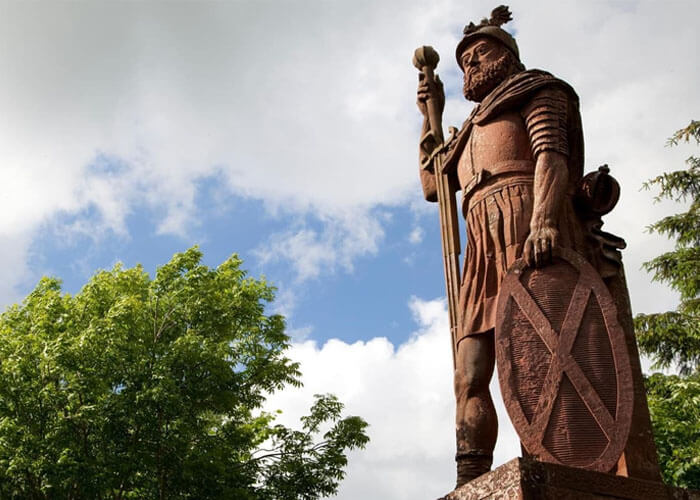
How historical measurements might differ from modern ones?
Historical measurements often differ significantly from modern ones due to variations in units of measure and the lack of standardization. In medieval Scotland, height might have been recorded using units like the ell or foot, which could vary in length from region to region. Additionally, descriptions of height were often influenced by the observer’s perspective and the cultural context.
A figure described as “tall” in the 13th century might not meet modern expectations of height. The average height of people in medieval times was generally shorter than today, so a man of Wallace’s reputed stature would have been even more remarkable to his contemporaries.
Popular Myths and Legends
Common myths about Wallace’s height
Many myths about William Wallace’s height have emerged over the centuries, often portraying him as an almost superhuman figure. One common myth is that he stood over 7 feet tall, which is likely an exaggeration. Such tales likely originated from a desire to emphasize his strength and heroism. Some stories even claim that his sword was so large only a giant could wield it.
These myths contribute to the larger-than-life image of Wallace, blending fact and fiction. While these stories are captivating, they often lack historical evidence and stem more from legend than reality.
Impact of literature and movies on these myths
Literature and movies have played significant roles in shaping and perpetuating myths about William Wallace’s height. Blind Harry’s epic poem “The Wallace” depicted him as a towering figure, which set the stage for future exaggerations.
The 1995 film “Braveheart,” starring Mel Gibson, further amplified Wallace’s legendary status, although it didn’t specifically address his height. These portrayals focus on his heroism and physical prowess, which naturally lends to the myth of an imposing stature. Such dramatic representations help cement these myths in popular culture, making it difficult to separate the man from the legend.
Comparison between historical records and popular culture
Historical records about William Wallace offer a more nuanced view of his life and physical characteristics, while popular culture tends to amplify his traits for dramatic effect. In historical documents, his height is mentioned occasionally but not emphasized as a defining feature.
These records focus on his deeds and leadership during the Wars of Scottish Independence. In contrast, popular culture often portrays Wallace as a towering giant, a visual metaphor for his larger-than-life heroism. This comparison highlights the gap between the real historical figure and the mythologized version celebrated in books and movies, reflecting society’s penchant for embellishing the past.
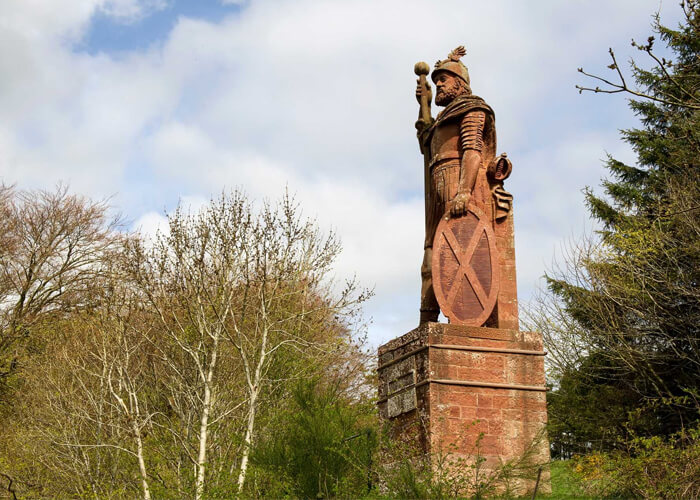
Scientific and Archaeological Evidence
Lack of direct archaeological evidence
There is a notable lack of direct archaeological evidence regarding the height of William Wallace. Unlike some historical figures whose remains have been studied, no verified skeletal remains of Wallace exist. This absence makes it challenging to determine his exact physical stature conclusively.
Most of what we know about Wallace comes from written records, which often focus on his heroic deeds rather than personal attributes. The lack of direct evidence leaves room for speculation and myth, as there are no concrete archaeological findings to confirm or deny the claims about his height.
Importance of secondary evidence like weapon size and armor
In the absence of direct archaeological evidence, secondary evidence such as the size of weapons and armor attributed to William Wallace can offer indirect clues about his height. For example, Wallace’s sword, which is on display at the National Wallace Monument, is notably large, suggesting it might have been wielded by a person of significant stature.
Similarly, any armor believed to be his could provide insights into his physical dimensions. However, these items are often subject to historical inaccuracies and mythologizing, so while they can offer hints, they are not definitive proof of Wallace’s height.
How scientific methods can provide indirect clues?
Scientific methods can help provide indirect clues about William Wallace’s height. For instance, forensic anthropology techniques can analyze the skeletal remains of people from Wallace’s time and region to estimate the average height. DNA analysis from known descendants could also offer insights into his genetic background, including potential height markers.
Additionally, historical records can be scrutinized using modern technology to better understand the context and accuracy of descriptions. While these methods cannot definitively determine Wallace’s height, they can help paint a more accurate picture of the era’s physical characteristics, providing a more informed estimate.
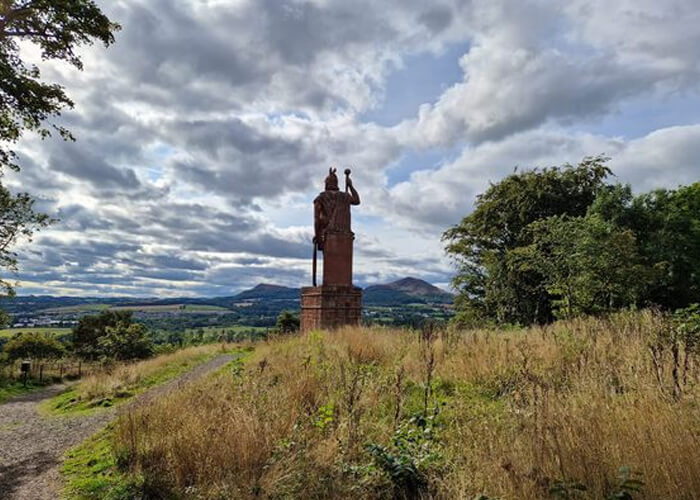
The Context of Height in Medieval Times
Average height of people during Wallace’s time
During William Wallace’s time in the late 13th and early 14th centuries, the average height of people in Scotland and across Europe was generally shorter than it is today. Men typically stood around 5 feet 6 inches (167 cm) tall, while women averaged about 5 feet 2 inches (157 cm).
These averages were influenced by a variety of factors, including nutrition, health, and living conditions. Poor diet and frequent diseases often stunted growth, leading to shorter statures. Therefore, if Wallace was indeed taller than average, even by a few inches, he would have been considered notably tall for his era.
How Wallace’s height might have compared to his contemporaries
If William Wallace was taller than the average man of his time, he would have stood out among his contemporaries. Descriptions of Wallace often emphasize his imposing presence, suggesting that he was taller and more physically imposing than most men around him. This would have given him a significant advantage in battles and leadership, as a taller stature was often associated with strength and authority.
Comparisons with other historical figures of the period, such as Robert the Bruce, could provide context, but exact comparisons are challenging due to the lack of reliable height records from that era.
Factors influencing height in medieval Scotland
Several factors influenced the height of individuals in medieval Scotland, including nutrition, genetics, and overall health. Nutrition played a crucial role; diets rich in protein, vitamins, and minerals were essential for proper growth, but many medieval diets were lacking in these nutrients.
Genetics also determined potential height, with taller parents likely to have taller children. Additionally, frequent illnesses and harsh living conditions could stunt growth. The combination of these factors meant that while some individuals, like Wallace, might have been taller due to better genetics or nutrition, the average height remained relatively low compared to modern standards.
See here: How To Register A Death In Scotland?
FAQs:
William Wallace is often depicted as a tall and imposing figure, but exact measurements of his height are not available. Historical accounts and legends suggest he may have been over 6 feet tall, which was quite tall for his time. However, these descriptions are based on second-hand accounts and myths rather than concrete evidence.
William Wallace’s sword, known as the Wallace Sword, is approximately 5 feet 4 inches (1.63 meters) long. It is housed in the National Wallace Monument in Stirling, Scotland. The size of the sword has contributed to the legend of Wallace being a towering and powerful figure, as such a large weapon would be difficult for an average-sized person to wield effectively.
William Wallace was executed in 1305, and his body was quartered as a warning to others. His head was placed on a spike on London Bridge. There are no records indicating the preservation or current whereabouts of Wallace’s head. Likely, it has long since disintegrated or been otherwise lost to history.
The idea that William Wallace had a child with Princess Isabella of France is a myth popularized by the movie “Braveheart.” In reality, Isabella was only about 10 years old and living in France at the time of Wallace’s death in 1305. She later married King Edward II of England, but there is no historical evidence to support the claim that she had any relationship with William Wallace.
Conclusion
In conclusion, the question “How tall was William Wallace” remains shrouded in mystery and myth. Historical records provide limited information on his exact height, with descriptions often influenced by the legends surrounding his heroic deeds. While some sources suggest that he stood over 6 feet tall, making him a giant of his time, these claims are based more on narrative and folklore than concrete evidence.
The lack of direct archaeological findings further complicates the matter, leaving us to rely on secondary clues like the size of his sword and accounts from contemporaries. Wallace’s height, whether exaggerated or factual, contributes to his enduring legacy as a towering figure of Scottish history and a symbol of resistance and bravery. Ultimately, the fascination with his stature reflects a broader human tendency to elevate our heroes, making them larger than life both in deeds and physical presence.
Checkout: kilt Jackets & Vests | Prince Charlie, Argyle, Doublet Jackets



